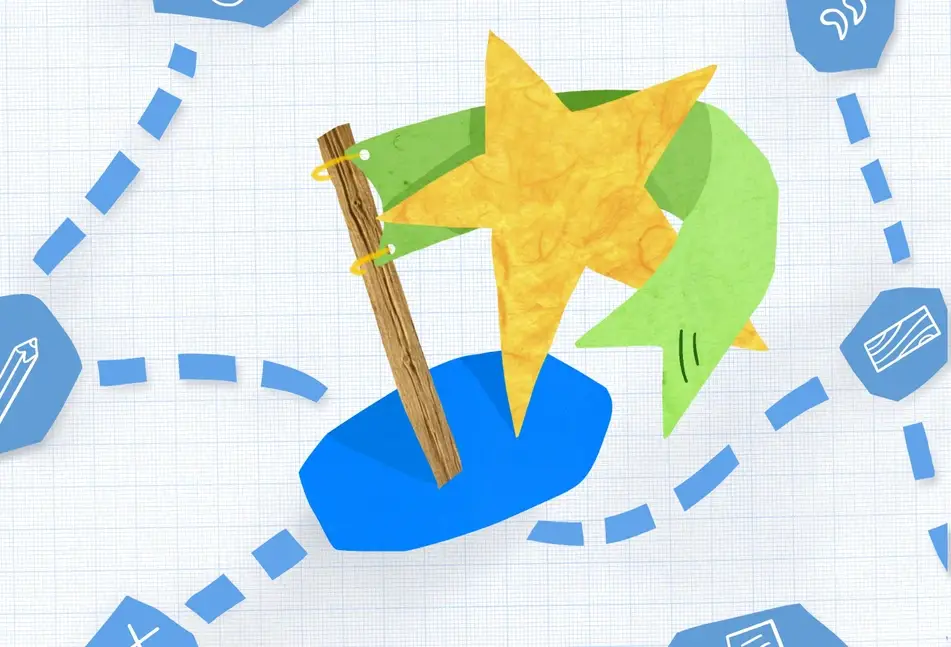Redefining Success | Identifying and Setting Strategic Personal Goals

When was the last time you felt like you truly achieved a goal?
If you’re already digging deep into your memory and running through your rolodex of big wins or big moves, its not just you! Many of us think to achieve a a goal means accomplishing something that feels pretty huge, possibly stressful, and quite unlikely to repeat itself.
We tend to see goals this way because the goals that are most often modeled for us—in life and in the media—are huge, stressful, and unlikely to happen on repeat.
And while it can feel so satisfying to achieve one of the “big ones,” it can also leave us feeling a bit unsuccessful when we’re in those in-between moments in life and career.
In this post, we’ll focus on a critical—yet often overlooked—part of the goal-setting process: stepping back to reflect on our holistic journey. As a first step, it can sometimes feel like there’s not enough action associated simply reflecting and so we may choose to skip over it altogether. But without this map, we simply can’t truly visualize and plan for what we want to achieve.
If you don’t take the time to thoroughly consider where you want to land, you put yourself at greater risk of working toward something you’re not truly committed to (and perhaps not completely informed about), making it more likely that you’ll give up before you ever get there. Another benefit of spending time imagining and reflecting is that you’re likely to uncover some small goals and achievements that you’d like to work toward, and perhaps these wouldn’t have even shown up on your radar otherwise.
Mapping ourselves
Let’s start with an exercise. Take a blank piece of paper or open a new document and write “I am a(n)” at the top. Take a few minutes and jot down whatever comes to mind to complete the sentence. Here some questions to consider as you complete this exercise:
- What are your hobbies and interests? (ex: photographer, runner, reader, advocate)
- What is your relationship to other people (ex: brother, mother, granddaughter, friend, aunt)
- What skills do you bring to your work? (ex: detail-oriented, customer service-focused)
- What have you enjoyed learning? (ex: speaking French, pottery, philosophy)
- What are your personality traits? (ex: creative, extroverted, contemplative)
Once you have compiled your list, think about what else you want to be, but have not yet taken steps toward and add these, too. Are there any interests, relationships, parts of your work, intellectual pursuits, or traits you’d like to see alongside your “I am a(n)” statement? These may be concrete, like wanting to become a rock climber, or more abstract, such as wanting to be more patient during conflicts.
Don’t shy away from from something that feels ambitious; just because you’ve put it on paper doesn’t mean you must commit to making it so. But rather it’s something to reconsider each time you come back to your document. While you may not be prepared to become an ultramarathoner right now, perhaps the next time you review your exercise, you’ll consider if/how you want to make room to achieve that goal.
As you review your list, I have a feeling that two things will jump out at you right away:
- You are a wonderfully complex and multidimensional being.
- Your list may have little or no connection to society’s (and often our own) goals for us. This is a reminder that you are uniquely you! We are more than the handful of identifiers we typically identify with, and our lists can help us satisfy our desires to learn, grow, and achieve.
Identifying a goal area
Pick one goal. Look at your list and fill in the blank for this statement: “I would feel incredibly accomplished, if over the next 4-12 weeks, I __________.” Don’t worry how you word this, just start writing.
These notes will help to inform the setting of what is referred to as a SMART goal, ultimately offering you a clear roadmap for how you may get there and by when.
Be sure to keep your “I am a(n)” list handy and revisit it often. As you dive into more detailed planning as well as identifying milestones, it will be interesting to add to and adjust this document over time. Although some of it may change, your list can keep you accountable and you can return to it to explore a new goal as your path takes inevitable twists and turns.
As the Associate Director of Marketing and Communications at Idealist and a lifelong nonprofit professional, Alexis offers job seekers, game changers, and do gooders actionable tips, career resources, and social-impact advice.






